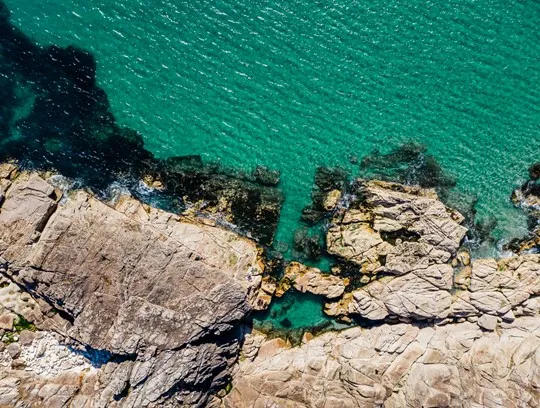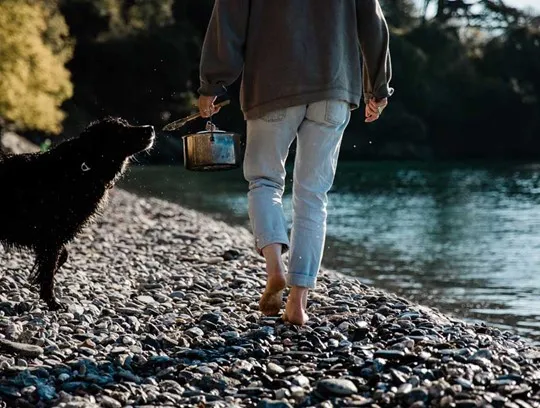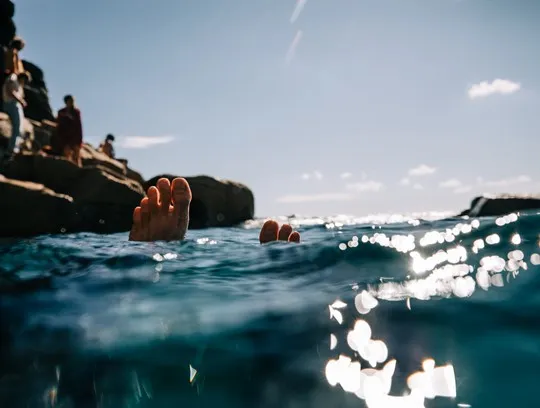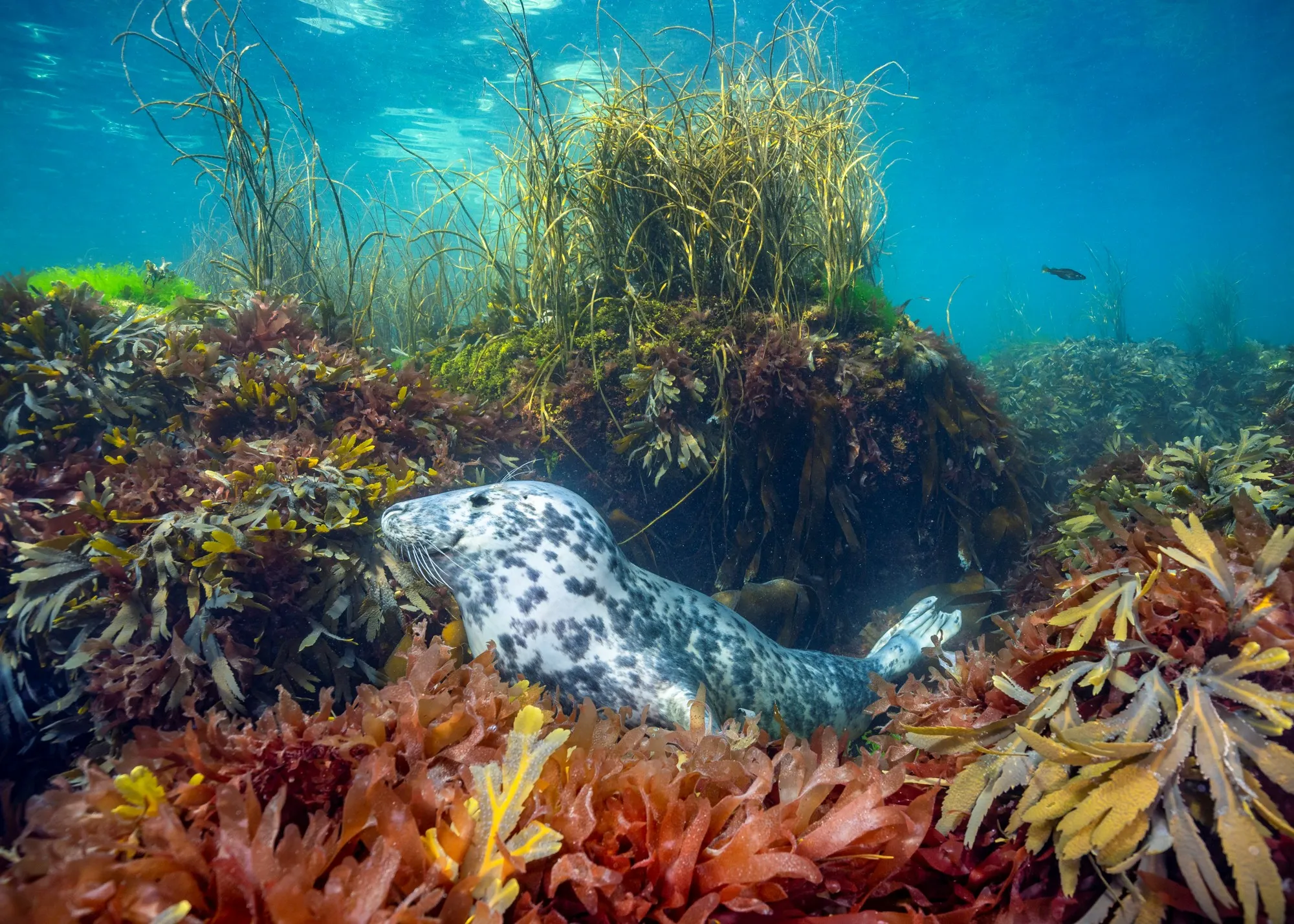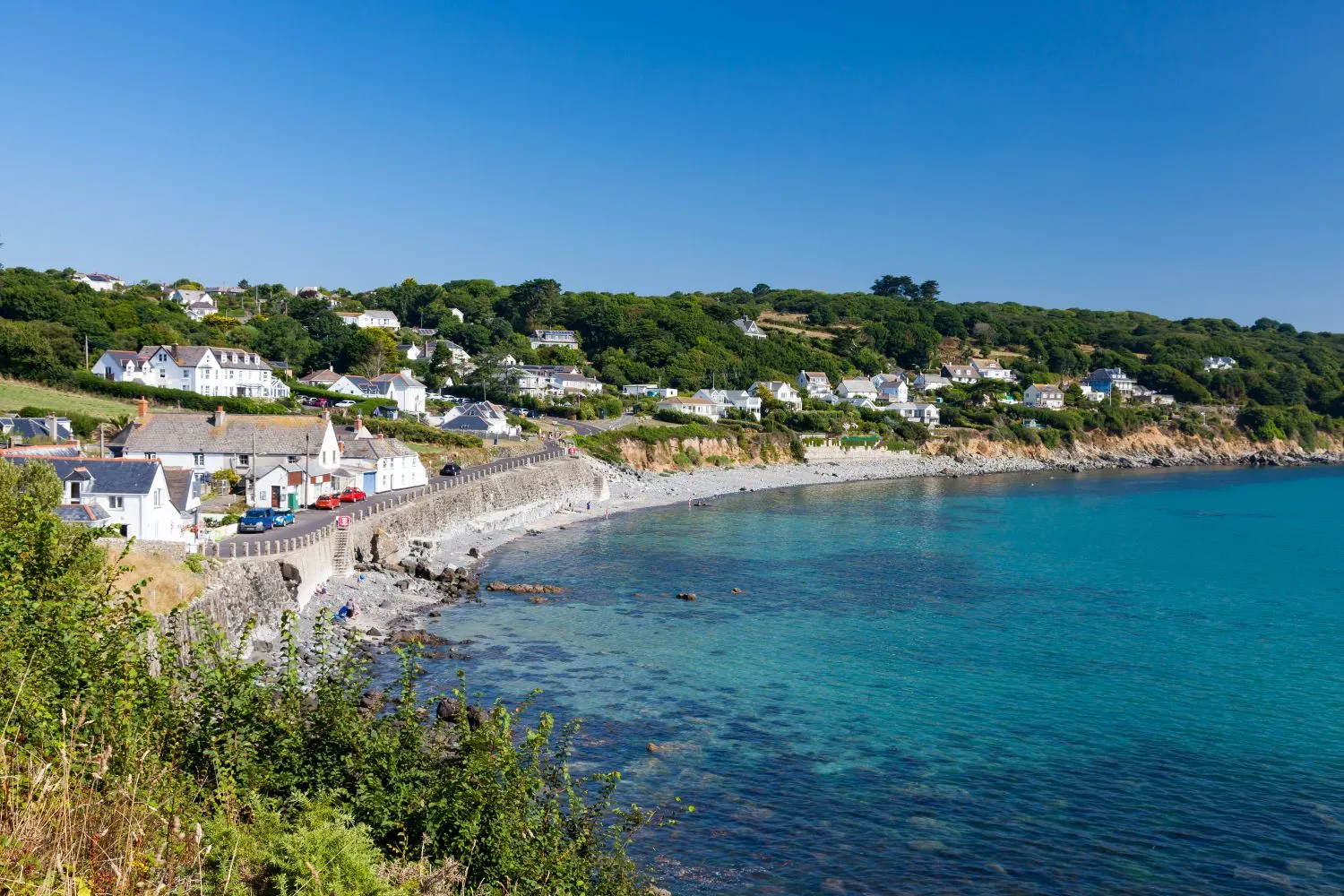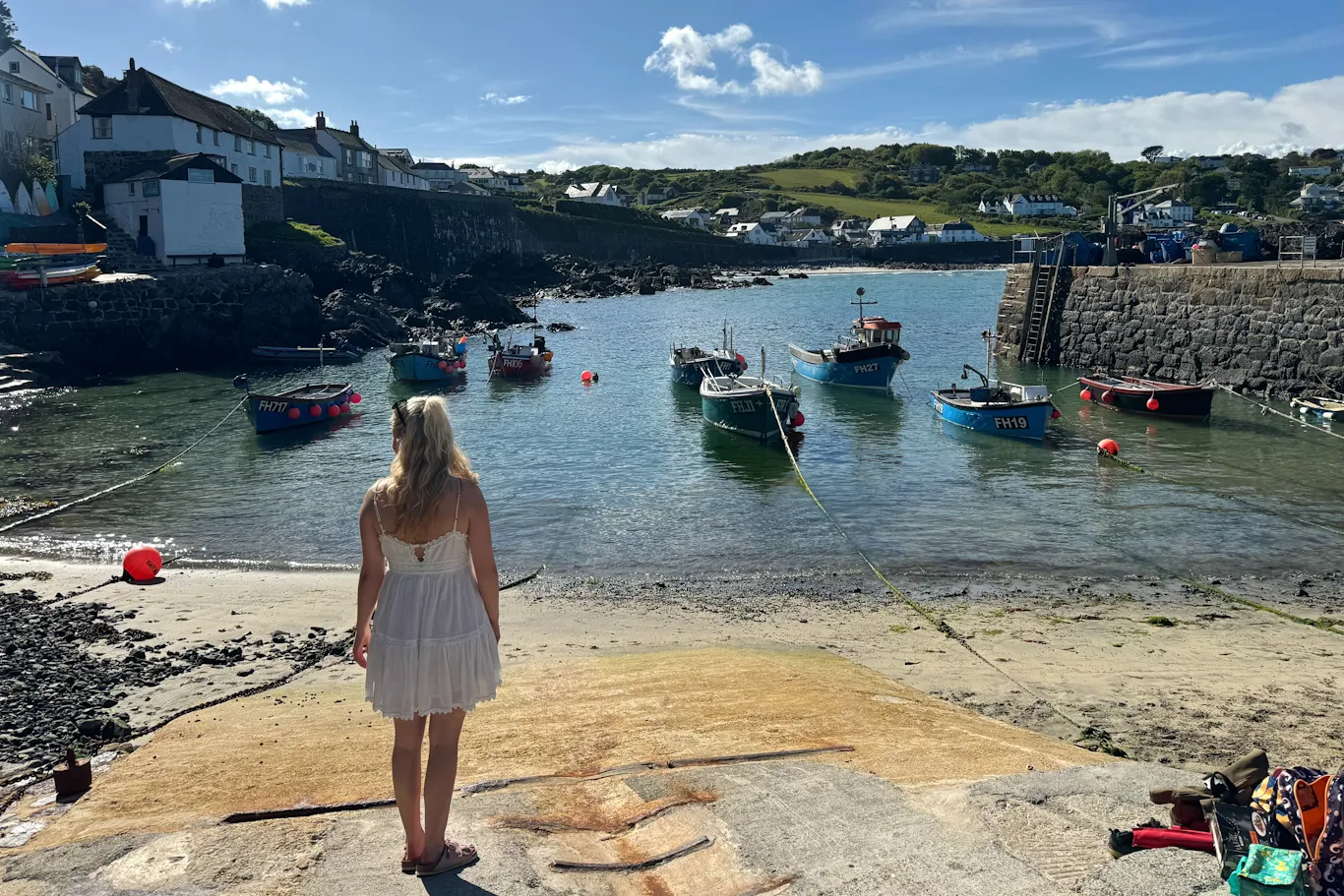Home / Wander through Widemouth
Wander through Widemouth
Widemouth Bay is a beach with some serious history to discover and some seriously great shoreline activities, offering more than you might expect from one beach. 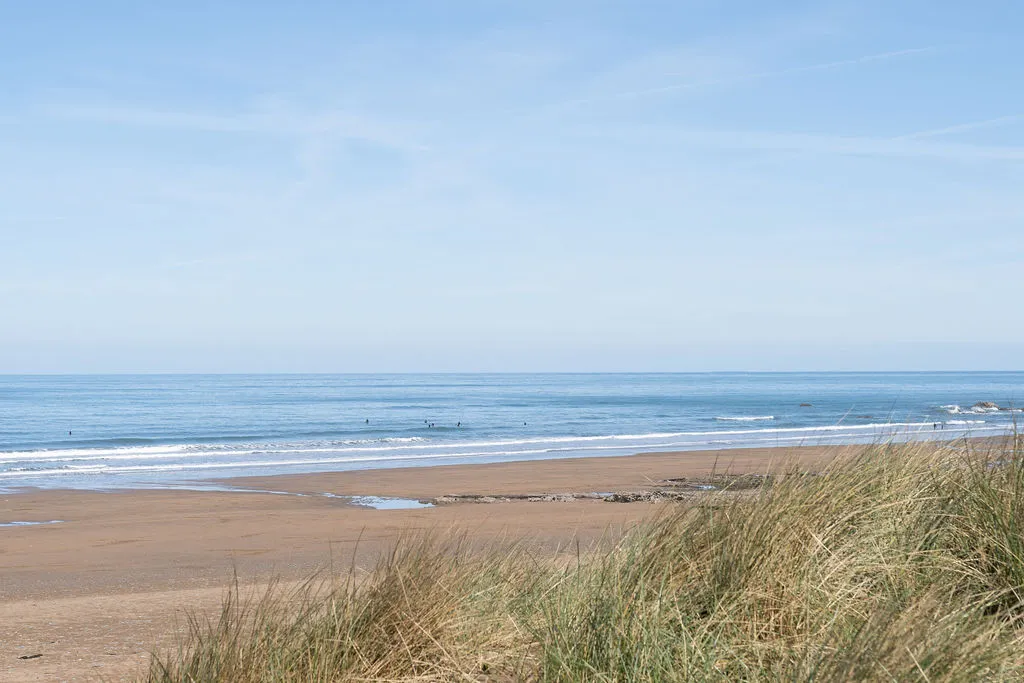
It’s an early morning in midsummer along the coast path, south of Widemouth Bay. Pink thrift, foxgloves and gorse bloom along the clifftops. Butterflies drift among the wildflowers. Below us, the drum of surf against the cliffs provides a steady, bass-note soundtrack, and in the distance, there’s a few surfers paddling out to catch their first breaks of the day. It’s like a Cornish postcard that’s come to technicolour life – but we’re not just here to admire the scenery. We’re setting out in search of the Bude Formation: Cornwall’s answer to the Jurassic Coast.
300 million years ago, Cornwall was located thousands of miles further south near the equator, and sat at the bottom of an ancient, sub-tropical lake. Above my head, in a topographical feature known as a chevron fold, there’s the story of that ancient epoch written into the cliffs: layers of sand, peat and mud built up over millions of years, fossilized into rock, and twisted by tectonic forces into strange, zig-zag formations that seem to ebb and surge through the cliffs like frozen waves.
Walkers could easily stroll past without giving a second glance, but the cliffs of the Bude Formation offer a time capsule of our planet’s past, to an era long before the first dinosaurs walked the earth. Occasionally, the area even yields fossils – one of which, an ancient piranha-like fish called Cornuboniscus Budensis, was discovered here in 1932, the only place on earth it has ever been found (you can see it on display in the Bude Heritage Centre). Geology students travel from all over the world to see these cliffs. Today, we have it all to ourselves.
Walk on the wild side
The topography of the coastline around Widemouth makes it a walker’s paradise. Pocked by caves, coves and high cliffs, it’s one of the most dramatic stretches of the South West Coast Path. In a day’s walk from Widemouth, it’s possible to hike from the wooded valley of Millook to the steep cliffs of Crackington Haven, and still just about have time to get back for tea – but be prepared for some steep climbs and descents along the way.
Alternatively, there’s an easier walk north from Widemouth to Bude, a 3-mile route that can be combined into a longer loop by taking in a section of Bude Canal, the town’s grand 19th century engineering project, long since returned to nature (the tow path is also popular with bikers).
“From here, the beach stretches north onto the main beach, Widemouth (affectionately known as Widdy, or sometimes Trelawny): a long, golden, sandy sweep, brilliant for a host of beach pursuits”
Widemouth is one of the largest and wildest bays in the Bude area. Stretching for 2km, it’s renowned as one of Bude’s top surfing beaches: it faces due west, so receives reliable swells when the wind is right, and for most of the year is usually less crowded than Summerleaze, so better for beginners. The surrounding coastline is also superb for coasteering, a combination of scrambling, climbing, diving and wild swimming.
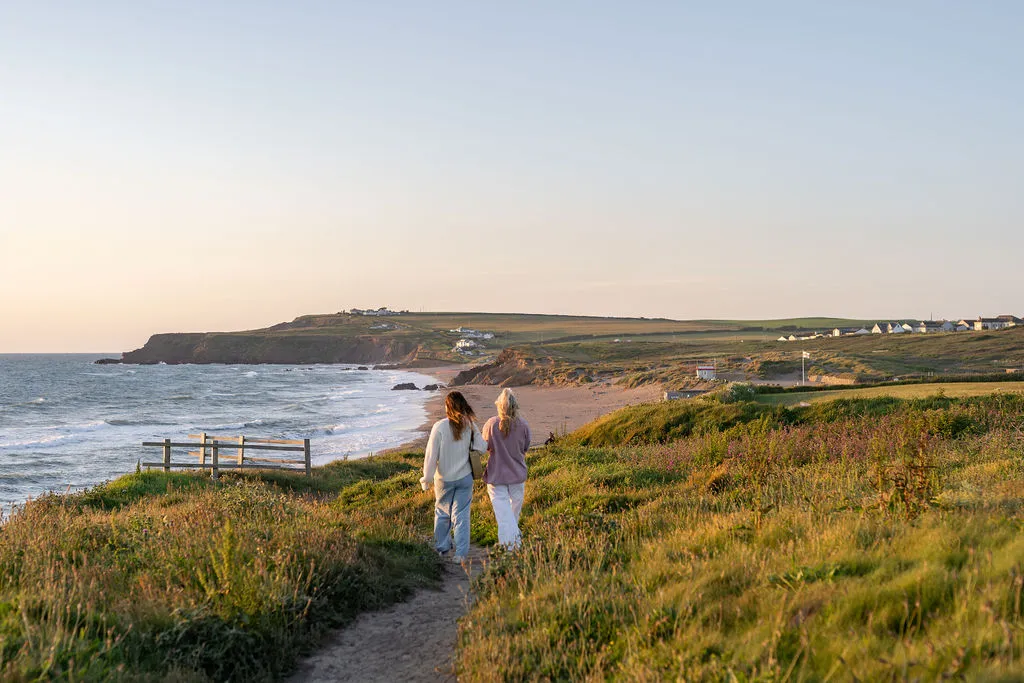
Not one but three beaches
There’s three beaches in one at Widemouth. At the southern end is Black Rock, a rocky area where the receding tide leaves a maze of rock pools, reefs and ponds, perfect for kids to explore. Unusually, it’s dog-friendly year round.
“Whatever you do, remember that’s it pronounced Wid-mouth, not Wide-mouth. Nothing is as guaranteed to wind up the locals!”
From here, the beach stretches north onto the main beach, Widemouth (affectionately known as Widdy, or sometimes Trelawny): a long, golden, sandy sweep, brilliant for a host of beach pursuits – sunbathing, building sandcastles, blustery walks and, of course, surfing. It’s lifeguarded in summer, so safe for swimming between the flags, and it’s also where most of the beach facilities are located – including a couple of places to eat, Black Rock Café and The Beach House.
At the far northern end is Salthouse, another expanse of rocky reefs that’s good for low-tide explorations – just watch your step, and keep an eye on the incoming tide, as it moves surprisingly fast.
Out of the summer season is also a great time to explore Widdy. There’s a strong community spirit here, and spring and autumn are the best times to see what the residents get up to when it’s a little quieter. And there’s nowhere better for a wild winter walk: watching the Atlantic waves smashing into the coast serves as a powerful reminder of the forces of nature that have been shaping this corner of Cornwall for millions of years.
Since the days of Cornuboniscus Budensis, in fact.
Widemouth Beach Community
Discover the beach community at Widemouth Bay, from beach cleaners to watersports experts.
Sea moreWidemouth Bay beach champions
Hear what our Widemouth Bay beach champions Mark and Helen have to say about this stretch of coastline.
Sea moreYOUR BEACH. FOUND
Your beach is the one that has just what you’re looking for: sandcastle sand, shoreline strolls, sunset surfs or sunrise swims. Find your beach with the Beach Match Quiz.
Take the quiz